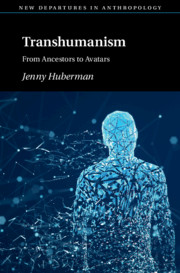Book contents
- Transhumanism
- New Departures in Anthropology
- Transhumanism
- Copyright page
- Dedication
- Contents
- Acknowledgments
- Introduction
- One Is Transhumanism a Revitalization Movement?
- Two Ancestors and Avatars
- Three Happily Ever After
- Four The Social Skin, the Antisocial Skin, and the Pursuit of Morphological Freedom
- Five Decoding the Self
- Six Rethinking Kinship Systems
- Seven From Original Affluence to Posthuman Abundance
- Conclusion
- Notes
- Bibliography
- Index
Seven - From Original Affluence to Posthuman Abundance
Published online by Cambridge University Press: 10 December 2020
- Transhumanism
- New Departures in Anthropology
- Transhumanism
- Copyright page
- Dedication
- Contents
- Acknowledgments
- Introduction
- One Is Transhumanism a Revitalization Movement?
- Two Ancestors and Avatars
- Three Happily Ever After
- Four The Social Skin, the Antisocial Skin, and the Pursuit of Morphological Freedom
- Five Decoding the Self
- Six Rethinking Kinship Systems
- Seven From Original Affluence to Posthuman Abundance
- Conclusion
- Notes
- Bibliography
- Index
Summary
Chapter 7 explores the varied ways transhumanists conceive of the econmoy of the future. It examines some of the ways transhumanists attempt to eliminate the problem of scarcity and it considers the values and assumptions that animate their attempts to do so. What kinds of social arrangements might a “post-scarcity” society be predicated upon? How do transhumanist conceptions of “radical abundance” compare and contrast with the way other societies have conceived of an affluent life? This chapter explores these questions by returning to Marshall Sahlin's essay, “The Original Affluent Society.” Revisiting Sahlins' essay will not only provide an ethnographic counterpoint from which to consider transhumanist conceptions of affluence, it will also enable us to consider how the economic organization of society influences other aspects of human social life.
Keywords
- Type
- Chapter
- Information
- TranshumanismFrom Ancestors to Avatars, pp. 182 - 216Publisher: Cambridge University PressPrint publication year: 2020

